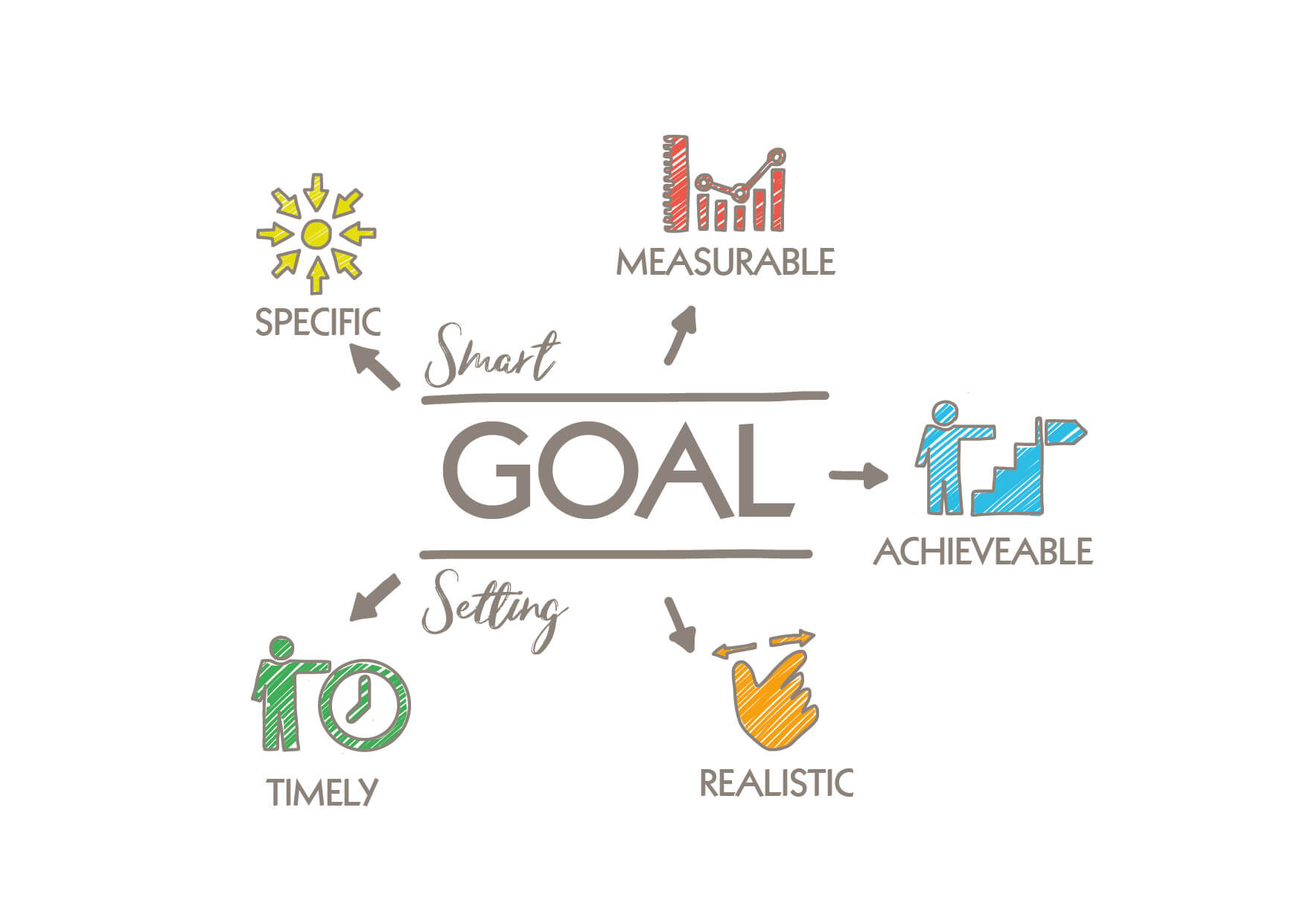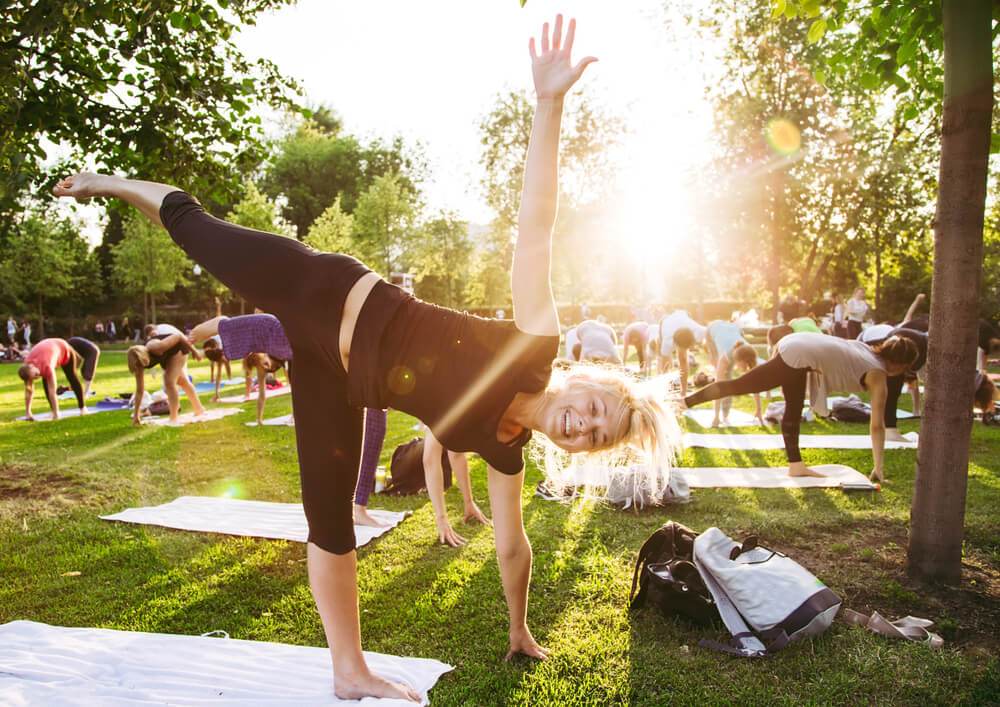When it comes to working out, consistency is key. Pushing yourself too hard will only damage your motivation, making it far less likely that you will stick to a regular workout routine.
This is why it is so important to set yourself realistic workout expectations, as this is what will give you the best results.
How do you make sure that your aims and goals are realistic?
Here are some tips:
Smart Goals
When it comes to setting goals, SMART is an acronym that can really help you.
What does SMART stand for?
- Specific – your goal should be clear and succinct. Read on for advice on choosing these specific goals
- Measurable – this basically means that you need to add a number to your goal. Make sure that there is a way to numerically track your progress
- Attainable – this is the tricky part. Your specific, measurable goal needs to be difficult enough to challenge and motivate you but attainable enough for you to actually achieve
- Realistic – make sure that your goal is realistic and relevant to you, and that it is the right time in your life to be putting your time and focus into achieving it
- Timely – give your goal a realistic deadline

Confused?
An example would be “I will go running four days a week for an hour each time, so that I can lose 5% of my body weight in six weeks time.”
Choosing Realistic Goals and Expectations
For many people, especially those who are new to working out, the main goal tends to be weight loss.
There is nothing wrong with this, but you do need to make sure that you are still being realistic…
How can you set a realistic weight loss goal?
You need to first take into account your current weight, along with your body fat percentage. The heavier you are, and the more body fat you have, the faster you will be able to lose this.
Once your body fat percentage and weight starts to decrease, it will then take you longer to lose the rest.
For many people out there, a good expectation to aim for would be to lose about one percent of your body weight a week.
How about for those who are trying to build muscle and strength?
Well, as above, those who are new to strength training will make progress faster.
Ideally, you should be able to add five pounds to the amount you lift each week.
For those who are beginners, you could aim to increase your body weight by between 1% to 1.5% each year. Those who are intermediate lifters should aim for about 0.5%, while those who are experts should aim for around 0.25%.
As you can see, there is quite a bit to take into account when setting your goal. You will need to do some research into making sure that your goal is a realistic one, so that you know that you will be able to achieve it.
Measuring and Documenting Your Progress
To begin with, you need to write your goals down.
Why?
Because not only does this make them more definite and real, but research shows that those who write down their workout plans and aims exercise around twice as much as those who do not.
Once you get started with your workouts, it is important to keep monitoring your progress. This will go a long way when it comes to keeping you on track to accomplishing your goal.
How should you monitor your progress?
Here are a few ideas:
- Keep a log book – your log book should contain the following information: your workout schedule, the actual exercises you have done, the amount of time you spent working out and numbers relating to your goal. This could be weight loss numbers, fitness levels, or anything else. Keeping track of your energy levels and your mood can also be beneficial
- Use an app – there are so many different workout apps out there that will help you to track your progress. Many of these can be accompanied by pieces of wearable technology, enabling you to obtain the highest in accuracy

- Keep a calender – this is similar to a log book, but laying it all out on a calendar will make it easier to visually see your overall progress
- Take pictures – taking pictures throughout your workout journey will enable you to compare any aesthetic changes side by side. They will also provide you with extra motivation when it comes to continuing on to making improvements to your body. Posting these photos on a social media account can also help to keep you accountable when it comes to sticking to your aims and goals
Sticking to Your Goals
For those of you who already regularly work out, you have likely had those days where you just can’t seem to muster up the motivation to exercise.
Sticking to your workout goals can be tough, but here are a few tips to help you out:
- Reward yourself – set yourself mini goals and then reward yourself each time you achieve one of these. The rewards could be anything from a pampering spa session to a short break away, depending on how much motivation you need
- Keep your workout bag packed – this makes it easier to just “grab and go” before a workout, rather than having to waste time sorting through your belongings and packing your bag
- Work out with friends and family – this not only makes working out more enjoyable, but will also hold you more accountable to your goals
- Plan some form of exercise for each day – even if you only plan to work out in the gym four times a week, you should still try to plan an active exercise for the remaining days of the week. This could be as simple as a bike ride, a hike with the dog, or even an evening stroll around your neighborhood
- Go public – whether you simply announce your goals to your friends and family, or set up a social media account where you post your progress, putting your goals out there in the big wide world makes it much harder to ignore them when things are feeling difficult
- Work with a personal trainer – this will give you some extra motivation, while the advice given to you during your workout will help to make your workout even more effective
Aligning Your Diet with Your Workout Goals
You are likely already well aware of the fact that your diet will have a huge impact when it comes to achieving your workout goals.
Eating the right foods before your workout will give your body the energy it needs to really thrive and be active, while eating certain foods afterwards will help when it comes to building muscle and reducing fat.
So, which foods should you be eating?
Well, before a workout, try to eat foods that are low in fiber and fat, but contain a moderate amount of protein and carbohydrates. Stay away from anything fried, greasy or filled with sugar.
Drinking plenty of fluids with your food is also important.
Why?
Because the water in these fluids acts as a cooling mechanism for your body, while also preventing it from becoming dehydrated.
What about sports drinks?
All you really need is water. However, if you tend to sweat quite a bit, or are working out in a humid environment, then a sports drink could be quite beneficial. Of course, if weight loss is your end goal, then make sure that the sports drink you choose does not contain too many calories. There are many diet versions of sports drinks available, so these may be better suited to you.
What should you be eating after your workout?
Ideally, you want to be eating foods that contain plenty of protein. This is what your muscles need in order to recover from all the exercise, as well as to grow.
However, don’t go overboard…
Your body only needs about 10 to 20 grams of protein after a workout.
Do you struggle to stick to a healthy diet?
Here are some tips to follow to make it easier:
- Eat smaller meals, but eat these more frequently throughout the day. This will help to naturally raise your metabolism, enabling you to burn more calories in the end
- Give food prep a try. Sorting your meals from before will make it much easier to stick to a healthy diet
- Try not to skip meals. This may seem beneficial in the short run, but it only means that you are much more likely to over-eat during your next meal
- A journal that documents your diet will help you to eat healthier
Keep Your Workouts Enjoyable
Working out can sometimes seem a bit tedious, and this only makes it so much harder to achieve your goals and expectations.
The key here is to make sure that you are keeping your workouts fun and enjoyable.
How?
Well, to begin with, choose some exercises that you genuinely enjoy. For example, if you hate going to the gym, then coming up with a workout plan that revolves around the gym isn’t something that is going to fill you with excitement.
In fact, working out outdoors can really give you a mental boost. Spending time in nature is extremely therapeutic, and you will likely find that you have a much clearer head after an outdoor workout. Research shows that exercising outdoors is much more effective at reducing feelings of stress than exercising indoors.

Try to keep mixing your workouts up, so that you aren’t doing the same exercises day in and day out. There are so many new and inventive exercises constantly being put out there, and trying something that you’ve never tried before will not only help in stimulating your body and muscles, but also your mind.
This is especially the case for those who haven’t been seeing the results that they have been expecting. This could be a sign that the exercises you have chosen aren’t quite right for your goal, and it would be worth exploring other options.
Listening to music while working out can also really be a game-changer…
Music has been shown to improve performance while also boosting motivation.
Wondering if there is a particular genre of music you should be listening to?
This all depends on the type of workout you are doing…
If you are warming up, something with a slightly slower tempo would be beneficial, while speed or endurance exercises would require a faster tune.
There are many BPM (beats per minute) calculators online that can help you to work out the tempo of a particular song.
Here are some guidelines to follow:
- Warming up – 100 to 110 BPM
- Stretching – 90 to 100 BPM
- Strength training – 110 to 120 BPM
- Endurance, agility and speed training – anything over 120 BPM
Another way to make your workouts more fun is to exercise with someone else. As mentioned above, this also has the added advantage of giving you some extra motivation while also making you more accountable to your goals.
Don’t have any friends or family who want to work out?
That’s ok because there are plenty of workout groups that you can join. Whether you join a more informal workout meet-up or an actual class, working out with others will give you a support system that will make your workouts so much more enjoyable.
Not only can it be difficult to decide upon workout expectations, but then you also have to make sure that you stick to your goals in order to actually achieve your expectations. This is why it is so important that any goals or expectations you set for yourself are realistic, as setting yourself up for success is key when it comes to successfully making progress with your workouts.




